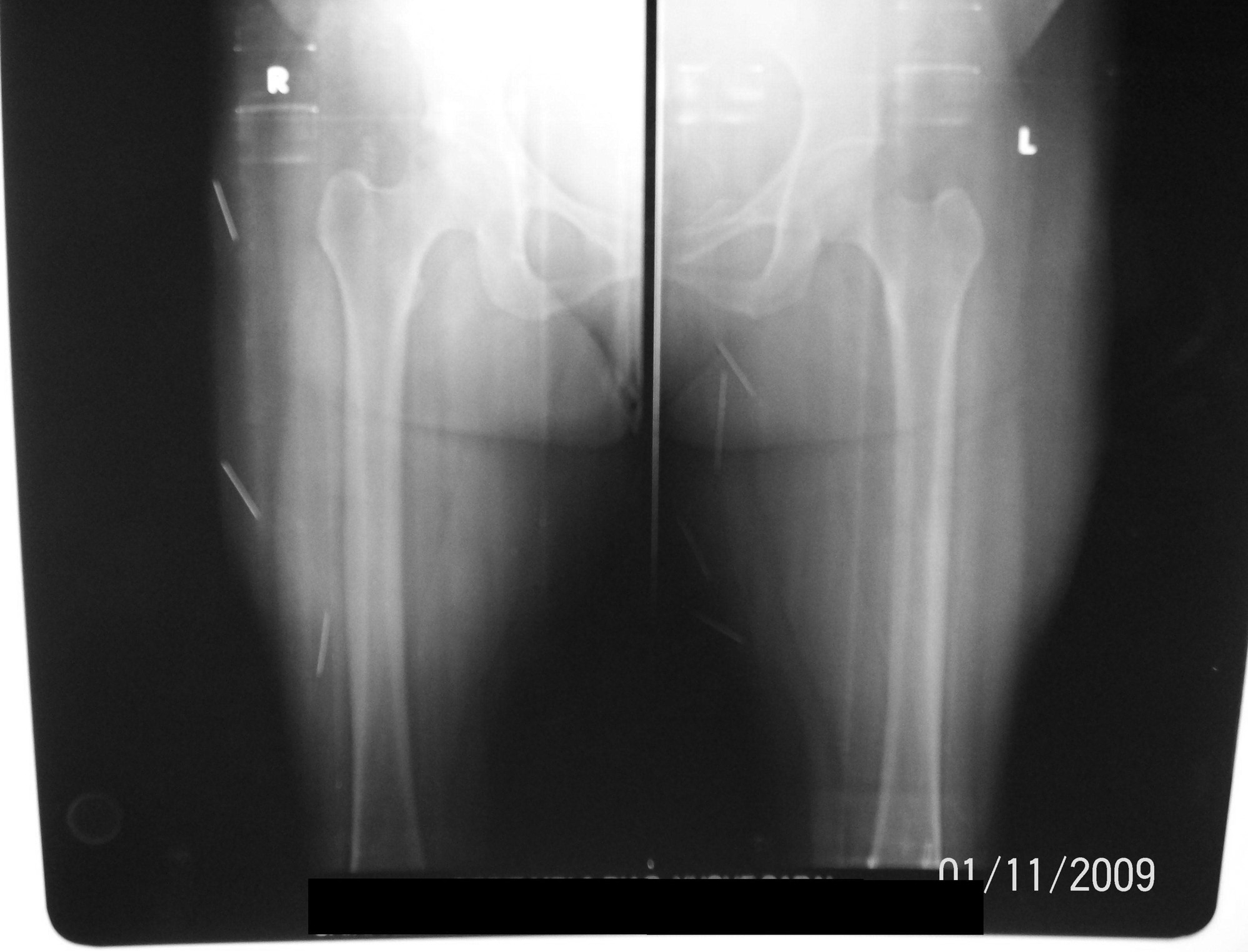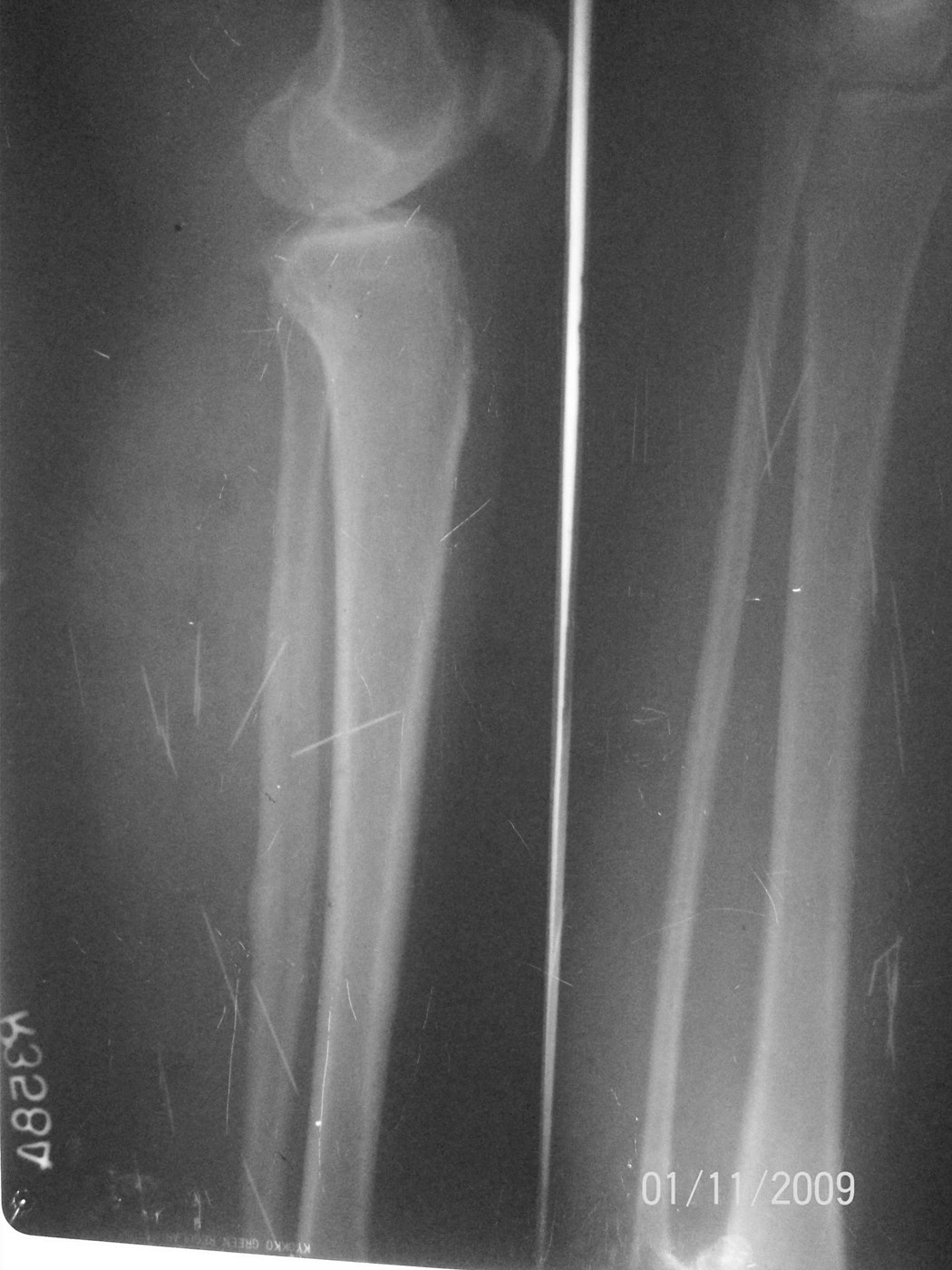To the Editor: Command hallucinations are those that direct a person to perform certain acts. These may compel a patient to perform actions that can put the safety of the patient and others at risk. In fact command hallucinations have been regarded as ‘potentially the most dangerous symptoms of schizophrenia’.
1 There have been instances wherein patients have been subjected to significant injuries as a consequence of such behaviors. However, at times the acts in response to these hallucinations might get unnoticed despite of them being detrimental to the safety and health of the patient. We hereby present a case where a patient was inserting pins and needles in her body in response to command hallucinations. The act of the patient went unnoticed for two years.
Mrs S.B, a 42-year-old married female presented in the psychiatry OPD of the institute accompanied by son and husband. According to the informants, she had been suffering from a continuous illness which started after around a week of her marriage in 1986. The husband had noted that the patient complained of hearing voices which were not heard by him. She would report the voices to be coming from outside the house. She had been afraid because these voices which were intimidating and appeared distressed throughout. She would also be fearful of people wanting to cause her harm and hence stopped going outside the house. Her demeanor had changed and would not be reassured by the husband that no one was out to harm her. She was suspicious and withdrawn. She would at times be very irritable and at times threw household articles for no apparent reason. Sometimes she would repeat words incessantly for no apparent reason and at times she would utter things not understandable by the family members. Her sleep had been decreased and appetite was poor. Her social interaction had decreased and herself care was markedly impaired. She was not able to take care of the household and the husband took over the major responsibilities.
Around 2 years back, she disclosed that she had been hearing the voice of her sister-in-law all this time, at home though she was not seen. She was asked by the voice to insert needles in her right calf, hip and hands or grave consequences would befall her family. Afraid, she complied with the commands and kept on inserting sewing needles into her body, not telling the family members. As a result she would have pain in the calf. She was given X ray imaging of body limbs, chest and abdomen was carried out. X-ray of the hip joints (Antero-posterior view) (
Figure 1) and knee joints (lateral view) (
Figure 2) revealed multiple radiopaque shadows fitting the description of needles.
Examination revealed no sensory or motor neurological deficits, and no inflammation or sinus at the sites. The needles were not visible on the exterior. However, some of the needles had been pulled out by her at different occasions previously when they had become palpable. During the interview, she spoke in a low volume and was preoccupied with the needles and requested medications to dissolve them. Otherwise she was largely uncooperative.
She had been treated by different psychiatrists for the past 20 years with antipsychotics with a diagnosis of schizophrenia. There had been reluctance to take medications initially and her symptoms fluc-tuated over the time period. Presently has been maintained on Risperidone (4 mg per day) with clinical improvement and had been manageable at home, and had decrement in the voices that plagued her. Due to the needles in the calf and hip, orthopedics and surgery consultation was taken. Since there was no inflammation or neural or vascular impairment, active intervention for the needles was not deemed imperative.
Discussion
The psychopathology of command hallucinations has not received adequate attention in research. Although the literature is available regarding the link of command hallucinations with violent and self harmful behavior, factors medicating this relation have not been adequately addressed.
Some of the earlier studies have concluded that command hallu-cinations alone may not imply greater risk for acute, life- threatening behavior.
2 However, more recent work has reported that patients experiencing command hallucinations to harm others are more than twice as likely to be violent.
3 Level of dangerousness during such experiences could be influenced by the patient's environment. Work by Shawyer et al has found the compliance to command hallucinations to be associated with increasing age, viewing the command hallucination as positive, congruent delusions, and reporting low maternal control in childhood.
4Apart from the increased risk of violent behavior command hallucinations are associated with a greater degree of adverse hallucinatory and illness experience. It has also been proposed that individuals are likely to be having a more malignant form of the underlying disorder if they are experiencing command hallucinations.
5The literature has largely focused on the violent acts related to the command hallucinations. These have included acts of harm directed toward others as well as self. However, command hallucinations can lead the patients to acts that might not be obvious to others and thus get unnoticed. There have been instances of injuries to the different parts of the body by insertion of needles as a consequence of the psychotic process.
6–9The present case is interesting from the perspective that command hallucinations can lead a psychotic patient to a markedly aberrant behavior. The case is unusual in the sense that patient persisted to comply with command hallucinations and insert needles for a long time while others including the family members were oblivious of such behavior. The act of inserting unsterile needles in the body could lead to multiple adverse conse-quences like damage to vessels, nerves, infections, abscesses etc. This it is recommended that the patients with psychotic illness should be subjected to a thorough physical examination on regular basis. Especially those with command hallucinations should be explored for the themes of the voices and should be assessed the possibility and likelihood of compliance to them.
Effective management of the underlying condition should be the most effective intervention strategy. This would mean timely introduction of antipsychotics for those with psychotic symptoms. Antipsychotics have shown to be protective against the compliance to command hallucinations.
4 In fact it has been reported that ability to identify the hallucinated voice could be a fairly reliable predictor of reported compliance to medication.
10


